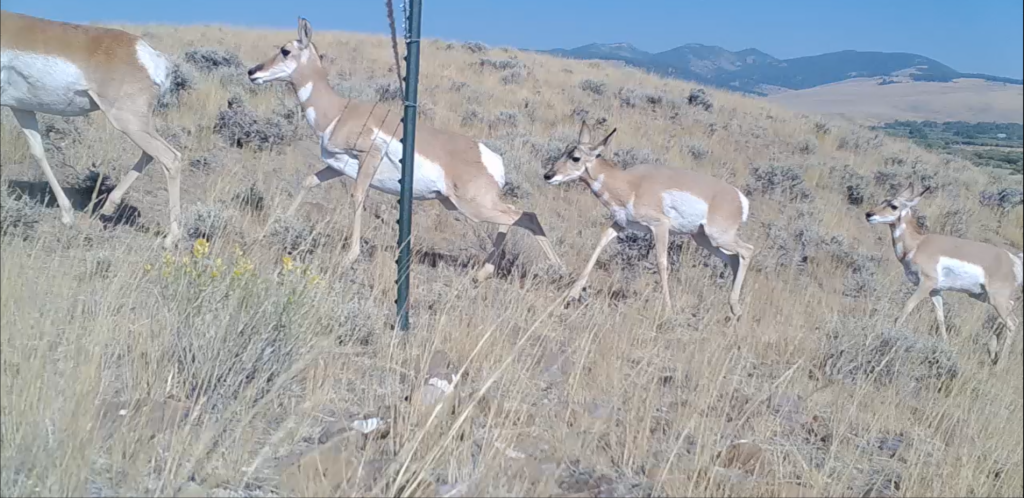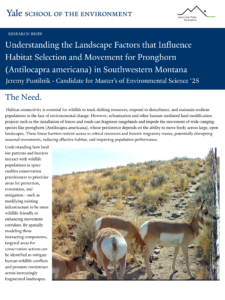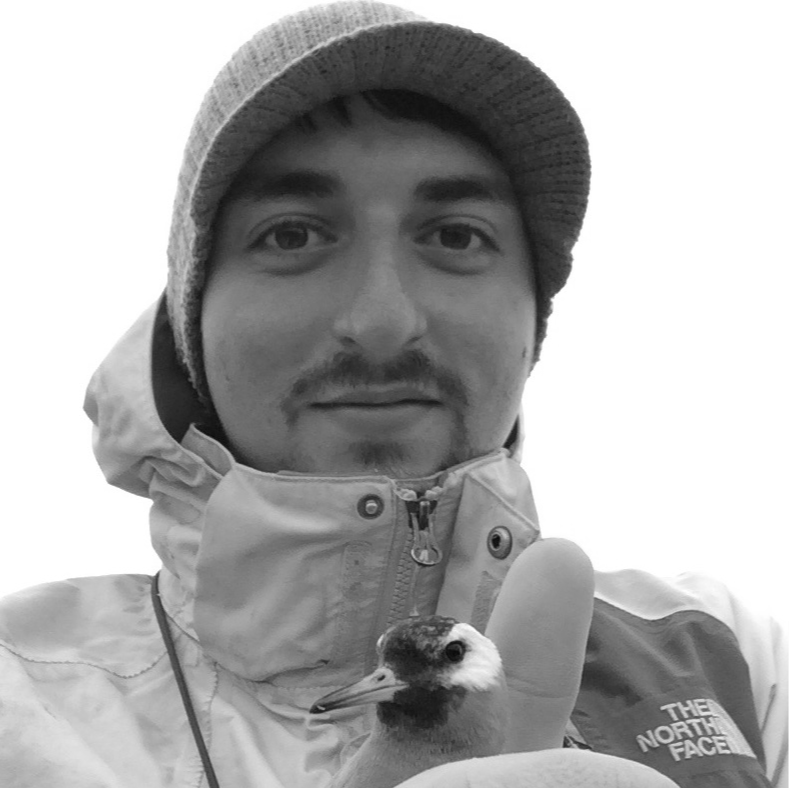
Pronghorn are an iconic wildlife species that inhabit the western interior of North America as they roam widely over vast expanses of rangeland, often sharing the landscape with nearby human communities. UHPSI research assistant Jeremy Pustilnik is collaborating with biologists at the National Wildlife Federation and the Southwest Montana Sagebrush Partnership to model pronghorn habitat selection and movement across southwestern Montana with step- selection functions using GPS collar data and publicly available landscape-level GIS layers. Understanding the influence of various landscape elements such as terrain and habitat availability is crucial to accurately model movement pathways and potential barriers, such as traditional fencing which can trap or obstruct pronghorn. Using these models, biologists will then be able to prioritize key areas for the installation of wildlife-friendly fencing. By understanding how landscape features shape movement behavior, this project will contribute to evidence-based strategies that promote connectivity, reduce wildlife conflicts, and inform future conservation initiatives.
Western Partner
Southwest Montana Sagebrush Partnership
PROJECT DELIVERABLE

STUDENT RESEARCHER

Jeremy Pustilnik – Research Assistant | Jeremy Pustilnik is a Master of Environmental Science candidate at the Yale School of the Environment (YSE) where he works on the movement ecology and territorial dynamics of Argentinian owl monkeys. He received his B.S. in ecology and evolutionary biology from Cornell University where he worked on the predator-prey interactions between foxes and rabbits at groundhog burrows, the movement of stone martens across the Mediterranean, and the population ecology of salamanders. Prior to YSE, Jeremy worked on the tundra of the Arctic Circle with the USGS monitoring goose and shorebird nesting success and in the desert scrub of central Texas on the disease ecology of mice and metacommunity dynamics of soil arthropods. With Ucross and the National Wildlife Federation he is working in GIS to develop landscape models of pronghorn movement and the implications of wildlife fencing in the American West. In his free time, he enjoys flipping over rocks and logs to find snakes and bugs, flying his drone for service projects like mapping local parks, and reviewing scientific manuscripts for the journal Urban Naturalist, at which he is an editor. Blog
